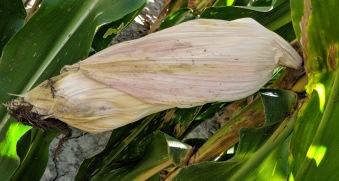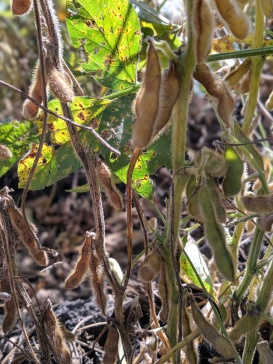Upcoming Events
Sept. 17: Cover Crop Field Tour, Nemaha County
Sept. 17-18: Good Farmer to Great Manager, North Platte
Sept. 20: High Boy Cover Crop Seeding Demonstration, 10:30 a.m., 53105 HWY 59, Creighton, NE
Oct. 1, 3, 15, 17: Know Your Numbers, Know Your Options, 5:30-8:30 p.m., Extension Office, O’Neill
Oct. 8, 10, 15, 17: Know Your Numbers, Know Your Options, 1-4 p.m., Extension Office, Fullerton
Oct. 9-10: 2019 Nebraska Water Conference, Divots Conference Center, Norfolk
Oct. 10: International Trade Conference, 8:30 a.m.-3:45 p.m., UNL College of Law Hamann Auditorium, 1875 N. 42nd St., Lincoln, NE
Oct. 21: CSI for Youth: Harvest Losses, 5 p.m., jrees2@unl.edu
Crop Update: Thinking about harvest as we continue to watch corn and soybeans progress toward maturity. And as I write this, my desire is to be honest about what I’m seeing and the concerns growers and other agronomists are seeing too. Perhaps part of my perspective is the fact that I’m typically called out to problem situations! But hopefully that perspective helps you in some way know what to watch for in your own fields. So before harvest occurs, would encourage growers to get out in your fields and see for yourself how your crops look. It’s just a great way to estimate what your true harvest potential is prior to harvest. And, it’s always easier to diagnose yield potential problems now vs. post-harvest. There are some tremendous looking fields out there, especially non-irrigated ones! Yet sometimes (once we hit canopy closure) we forget about the early season challenges and the variability that can occur. Variability such as plant stands and plant emergence based on variable seed depth that can be seen now with variable ear sizes. There’s misshapen ears due to various stresses based on specific field practices/situations as well.
The warm, drier weather this week allowed for some noticeable changes. Perhaps the biggest one is the concern regarding tops of corn plants rapidly senescing. This could be due to either anthracnose top dieback or another disorder called ‘top leaf death or dieback in corn‘. Anthracnose can cause leaf lesions, top dieback, or stalk rot. To diagnose if anthracnose is the culprit, you can look for black fungal anthracnose lesions which may be blotchy in appearance on the stalk underneath the leaf sheaths. You can also split the upper or lower stalk looking for any discoloration in the pith or nodes. If you don’t see the lesions or pith/node discoloration, the discoloration in the top of the plant may be due to top leaf death or dieback. A Canadian researcher documented greater top leaf senescence during a period of warm, dry weather during grain fill. Another researcher documented this tends to be more common during good grain fill years. We have experienced that type of weather with a good grain fill period, so top leaf death/dieback may be the bigger culprit.
Yet, be sure to check for stalk rot in these fields. I’m finding stalk rot increasing with each week especially where there’s nitrogen deficiency, areas where water ponded, high plant populations, higher disease pressure, and areas with hail damage. There’s also something interesting happening where in specific hybrids, it appears the refuge in a bag plants are dying early (and have stalk rot) in comparison to the primary hybrid planted (I’m unsure exactly why).

The other thing noticeable this week was husk tissue turning color and ears turning down as hybrids mature. We’ve had a long grain fill period creating large ears with deep kernels. There are specific hybrids where I’m concerned about large ears and small shank diameters. Shanks appear firmly attached for now, but it’s still something to watch. Been recommending growers get those fields out earlier if possible.
To evaluate percent stalk rot, at least 100 plants throughout the field should be assessed. I prefer the ‘pinch test’ and do this by taking my thumb and first finger and pinching the stalk internode that occurs between the lower nodes above the soil line. Do this for 20 plants in an area and get a percentage for those that crush. Then do this for several areas of the field. This YouTube video helps show how to do this: https://www.youtube.com/watch?v=7z75VN1c51Q.Fields that have the greatest percentages of stalk rot prior to harvest may be prioritized over others. Where it worked in their operations, some growers in 2018 chose to harvest at a higher moisture content in order to get at fields in a more timely manner.

Some soybean harvest has started. Taking my final on-farm research notes in fields, I’m noticing dead plants next to green ones. The dead plants often have anthracnose and/or pod and stem blight. In some fields early death is due to sudden death syndrome. Also noticing red/purple leaves on some varieties indicative of cercospora leaf blight. Thus, we have potential for discolored, chalky seed and also purple seed stain again; hopefully nothing to the extent of 2018.

































